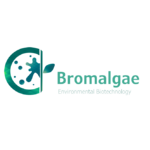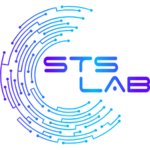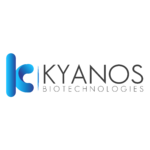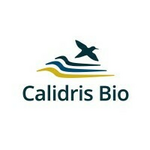Consultancy services to organisations developing ocean energy projects in any form, consultancy in the field of certification, project management of funded R&D projects,and project development of ocean energy projects.
Project TRL: TRL 7 - System prototype demonstration in a relevant environment
Main sector: Blue renewable energy
Seafloor restauration services using semi-autonomous ROVs suitable for Seagrass-shoots and seeds. Scale is enabled with own seagrass nurseries in Portugal and California.
Project TRL: TRL 3 - Analytical and experimental critical function and/or characteristic proof-of-concept
Main sector: Coastal and environmental protection and regeneration
itinerant analysis of marine waters
Project TRL: TRL 7 - System prototype demonstration in a relevant environment
Main sector: Blue tech and ocean observation
BlueWise Marine specialises in providing asset, project, marketing and stakeholder management consultancy and advice for marine and offshore renewable energy projects and initiatives. We work with government, industry and academic clients operating within Ireland’s blue economy to deliver their projects in a sustainable and socially inclusive manner. Our expertise in building and maintaining community relationships and our extensive industry network, knowledge and experience ensures the effective and efficient delivery client projects.
Project TRL: TRL 7 - System prototype demonstration in a relevant environment
Main sector: Blue renewable energy
This is our first time participating in the Blueinvest project. And we are a small ROV company from Trondheim, Norway designing, developing, testing and manufacturing Blueye ROVs. We have currently 3 models in the market and planning on expanding our product range.
Project TRL: TRL 9 - Actual system proven through successful mission operations
Main sector: Blue tech and ocean observation
Smart sailing tourism platform with certified skippers and sustainable local experiences.
Project TRL: TRL 4 - Component validation in laboratory environment
Main sector: Other Leisure travel tech boating and experiences
A New Circular Yacht Economy for sustainable yachting /
New brand of sustainable cruising catamarans /
Designed for boaters with reduced mobility
Project TRL: TRL 6 - System/subsystem model or prototype demonstration in a relevant environment
Main sector: Shipbuilding & Refit
Suction sails to reduce the fuel consumption and emissions of merchant ships.
Project TRL: TRL 8 - Actual system completed through test and demonstration
Main sector: Shipbuilding & Refit
Developing seawater electrolysis for sustainable carbon removal and renewable-powered e-feedstock production.
Project TRL: TRL 6 - System/subsystem model or prototype demonstration in a relevant environment
Main sector: Ocean pollution & water management

The Bromalgae project is summarized as a disruptive and innovative technology, rarely seen in the industry. Bromalgae has developed liquid trees, which contain living microalgae inside. These microorganisms have a carbon assimilation capacity 25 times greater than terrestrial trees. Microalgae are responsible for 75% of global CO2 fixation. They are found in both freshwater (reservoirs, lakes, rivers) and saltwater. Ecologically, they are classified as phytoplankton and are responsible for oxygenating the atmosphere, providing 50% of the oxygen we breathe.
The GarbiAir system is installed in urban areas with the highest emissions, such as zones with heavy vehicular traffic. A blower captures the surrounding air, which passes through pre-filters to remove suspended particles and harmful microorganisms that could affect the microalgae. The photobioreactor is fed with the CO2 and NOx from this air, which enters the system through bubbling, aiding in the system's agitation process, along with other essential nutrients in the medium and light. This process enables photosynthesis.
Using sensors, the concentrations of CO2 and NOx are continuously monitored. Two sensors are placed at the photobioreactor's entrance and exit to observe the difference in concentration. Depending on the weather conditions, the light intensity can be adjusted to optimize the photosynthetic process and prevent oxidative stress in the microalgal cells.
First GarbiAir pilot plant in Barakaldo (Bizkaia)
In June 2023, we inaugurated our first liquid microalgae vegetation system, GarbiAir, in Barakaldo. This first pilot plant will help us continue improving its design and allow us to further research the capture of CO2 and NO2 by the microalgae.
Second GarbiAir pilot plant in Bayonne (France)
In September 2022, a collaboration began with the municipality of Bayonne (France) and the Communauté d’Agglomération Pays Basque to test our innovative solution for capturing automobile emissions in real conditions. The installation of GarbiAir in Bayonne will allow us to validate the scientific principles of our system under different climatic conditions. This initial experiment will last between five and six months. It is funded by the Basque Government through its economic development agency SPRI and by the Communauté d’Agglomération Pays Basque.
The core of the technology used by Bromalgae is the amplification of the photosynthesis process. Bromalgae forces the microalgae, which act as "cell factories," to absorb atmospheric CO2 24 hours a day. This is achieved by providing a 24:0 light-dark photoperiod. The Bromalgae team has named this technology continuous photosynthesis.
Moreover, Bromalgae has its own design of photobioreactors, developed by its own Engineering Department. They are designed to handle volumes ranging from 100 Liters to 3,000 Liters.
Harvesting and drying is also carried out on-site through biomass centrifugation and drying. Once the processing is complete, the biomass is ready to be packaged and shipped.
-The photobioreactor of 100L capacity is made of food-grade stainless steel in a cylindrical shape. It features an internal LED lighting system and a bubbling agitation system using a 12 Nm3/h rubber diffuser.
-The photobioreactor 300 L capacity is made of PVC-glass in a cone shape in order to increase the volumetric area. It has an internal LED lighting system and a bubbling agitation system using a 12 Nm3/h rubber diffuser.
-The photobioreactor of 3,000 L capacity is made of food-grade polyethylene in a cylindrical shape. It includes an internal LED lighting system and a bubbling agitation system with nine independent rubber diffusers, each with a 12 Nm3/h flow rate.
Project TRL: TRL 9 - Actual system proven through successful mission operations
Main sector: Blue biotechnology
We aim to build the food of the future
Project TRL: TRL 6 - System/subsystem model or prototype demonstration in a relevant environment
Main sector: Blue biotechnology
BuyCo is a collaborative SaaS platform enabling shippers to simplify, optimise & better control the planning, execution & tracking of their maritime container shipments.
Project TRL: TRL 9 - Actual system proven through successful mission operations
Main sector: Shipping & ports
Avanc is commercialising a modular, affordable, platform for biological diagnostics and environmental sensing developed at the national oceanography centre (UK), capable of delivering real-time, accurate and high-quality data in environments that are currently under-monitored or too costly to access frequently.
Project TRL: TRL 5 - Component validation in relevant environment
Main sector: Aquaculture
Sustainable produced bacterial proteins for aquaculture feed.
Project TRL: TRL 5 - Component validation in relevant environment
Main sector: Blue biotechnology
CalWave's vision is to unlock the power of ocean waves to secure a clean energy future. Our mission is to provide reliable and cost effective ocean wave technologies for sustainable energy access. Our proprietary wave energy converter technology achieves high performance while surviving storms and extreme conditions by operating fully submerged at all times.
Project TRL: TRL 7 - System prototype demonstration in a relevant environment
Main sector: Blue renewable energy
Candela is developing electric hydrofoiling ferries. The first prototype was put in water last autumn. Ferry number two is planned to operate in the public transport system of Stockholm during Q3 this year. To scale up faster Candela is exploring possibilities to set up a shipping ownership and charter ferries for demo and feasibility studies to reduce experienced technology and financial risks for European mobility operators.
Project TRL: TRL 6 - System/subsystem model or prototype demonstration in a relevant environment
Main sector: Shipbuilding & Refit
To facilitate and regulate the hiring of pro sailors
Project TRL: TRL 9 - Actual system proven through successful mission operations
Main sector: Coastal and marine tourism
We want to revolutionize the way fisheries choose their fishing spots, to make them data driven and utilise the vast amounts of historical catch, movement and environmental data to help becoming more efficient and sustainable
Project TRL: TRL 7 - System prototype demonstration in a relevant environment
Main sector: Fisheries
Cell4food is a deeptech biotechnology startup with a B2B licensing-based business model aiming to develop the cellular agriculture technologies for the production of fish, molluscs and crustacean cell-based food products. Our main focus is the production of cell-based octopus biomass.
Project TRL: TRL 6 - System/subsystem model or prototype demonstration in a relevant environment
Main sector: Blue biotechnology
We are currently developing "CENOTE," a groundbreaking video game that integrates interactive gameplay with real-world ocean conservation efforts, directly funding marine restoration projects through player achievements.
Project TRL: TRL 7 - System prototype demonstration in a relevant environment
Main sector: Coastal and environmental protection and regeneration
Back to Pipeline
.png)



















